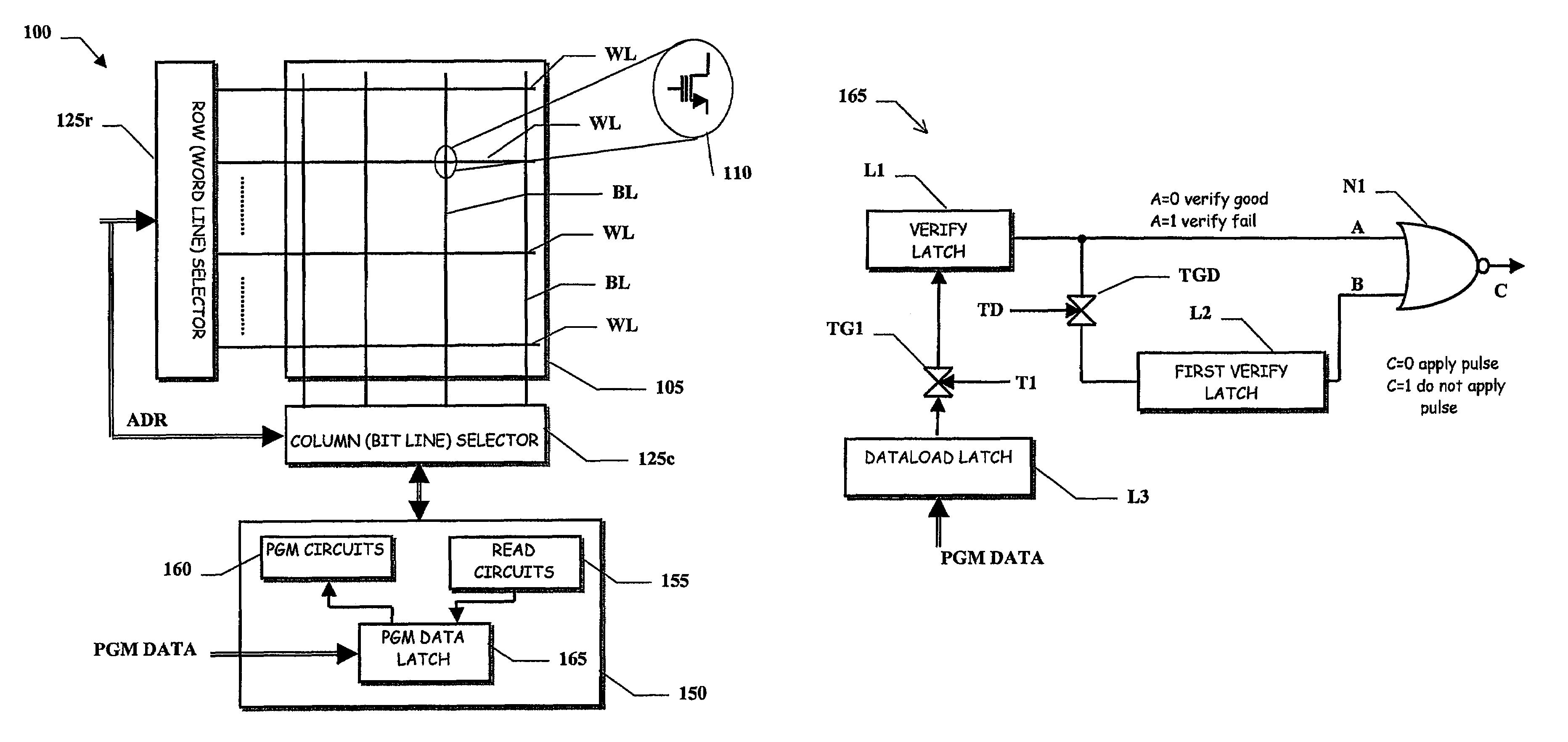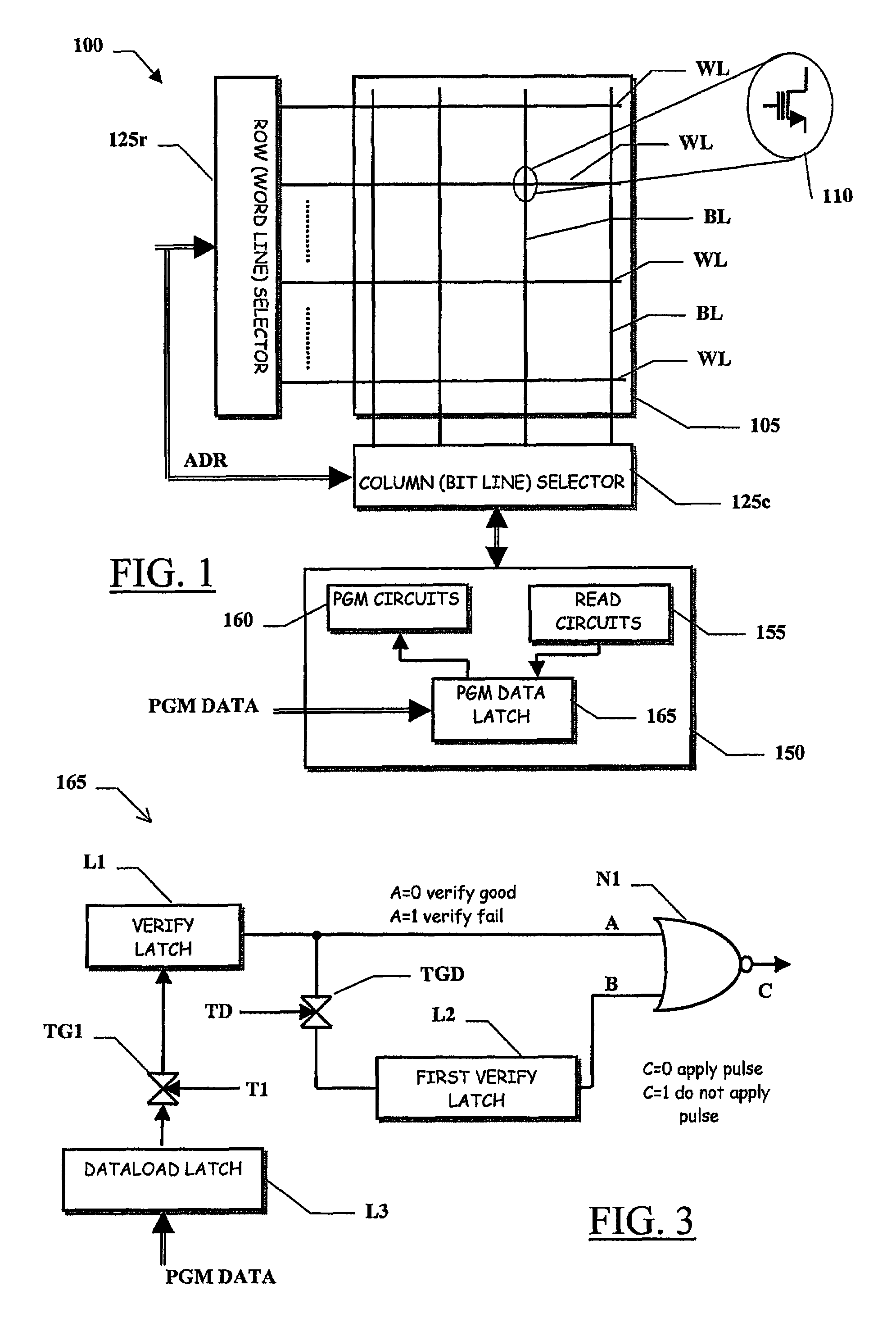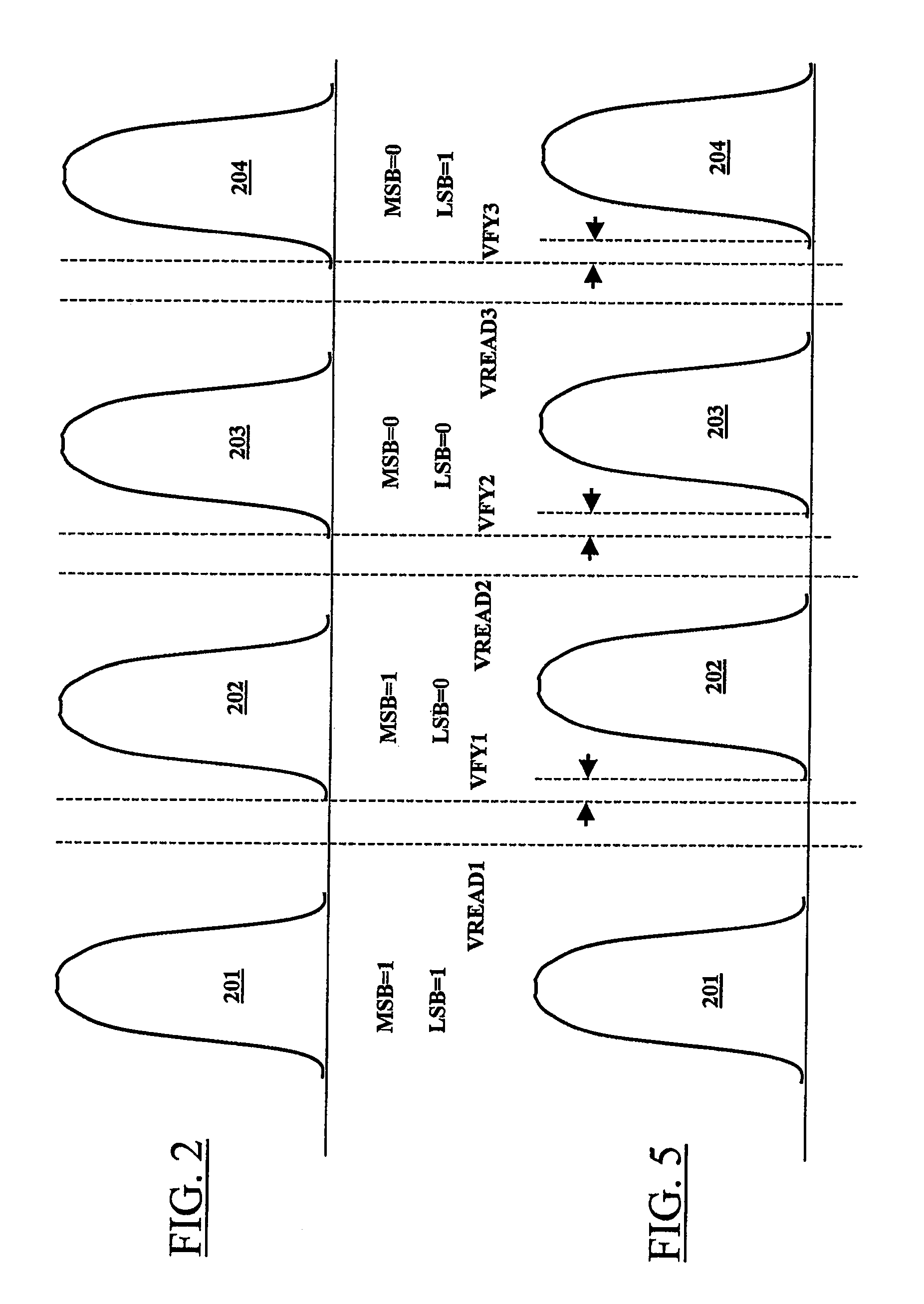Circuit and method for electrically programming a non-volatile semiconductor memory via an additional programming pulse after verification
a non-volatile semiconductor and programming pulse technology, applied in the field of solid-state memories, can solve the problems of generating several reference currents/voltages, no longer verifying the programming state, and different reference voltages/currents within the memory devi
- Summary
- Abstract
- Description
- Claims
- Application Information
AI Technical Summary
Benefits of technology
Problems solved by technology
Method used
Image
Examples
Embodiment Construction
[0042]With reference to the drawings, in FIG. 1 a non-volatile semiconductor memory, globally identified as 100, is schematically illustrated in terms of the main functional blocks; in particular, the memory 100 is an electrically-programmable, non-volatile semiconductor memory, for example a flash memory.
[0043]The flash memory 100 is integrated in a chip of semiconductor material, and includes a plurality of memory cells 110 adapted to store data; the memory cells 110 are arranged in a plurality of rows and a plurality of columns, and form a two-dimensional memory matrix 105.
[0044]Typically, each memory cell 110 consists of or includes an N-channel MOS transistor having a charge-storage element, such as a conductive, electrically-insulated floating-gate electrode adapted to be charged by electrons.
[0045]The flash memory 100, and particularly the memory matrix 105 may either have a NOR architecture or a NAND architecture, the specific architecture of the flash memory 100 being per-s...
PUM
 Login to View More
Login to View More Abstract
Description
Claims
Application Information
 Login to View More
Login to View More - R&D
- Intellectual Property
- Life Sciences
- Materials
- Tech Scout
- Unparalleled Data Quality
- Higher Quality Content
- 60% Fewer Hallucinations
Browse by: Latest US Patents, China's latest patents, Technical Efficacy Thesaurus, Application Domain, Technology Topic, Popular Technical Reports.
© 2025 PatSnap. All rights reserved.Legal|Privacy policy|Modern Slavery Act Transparency Statement|Sitemap|About US| Contact US: help@patsnap.com



